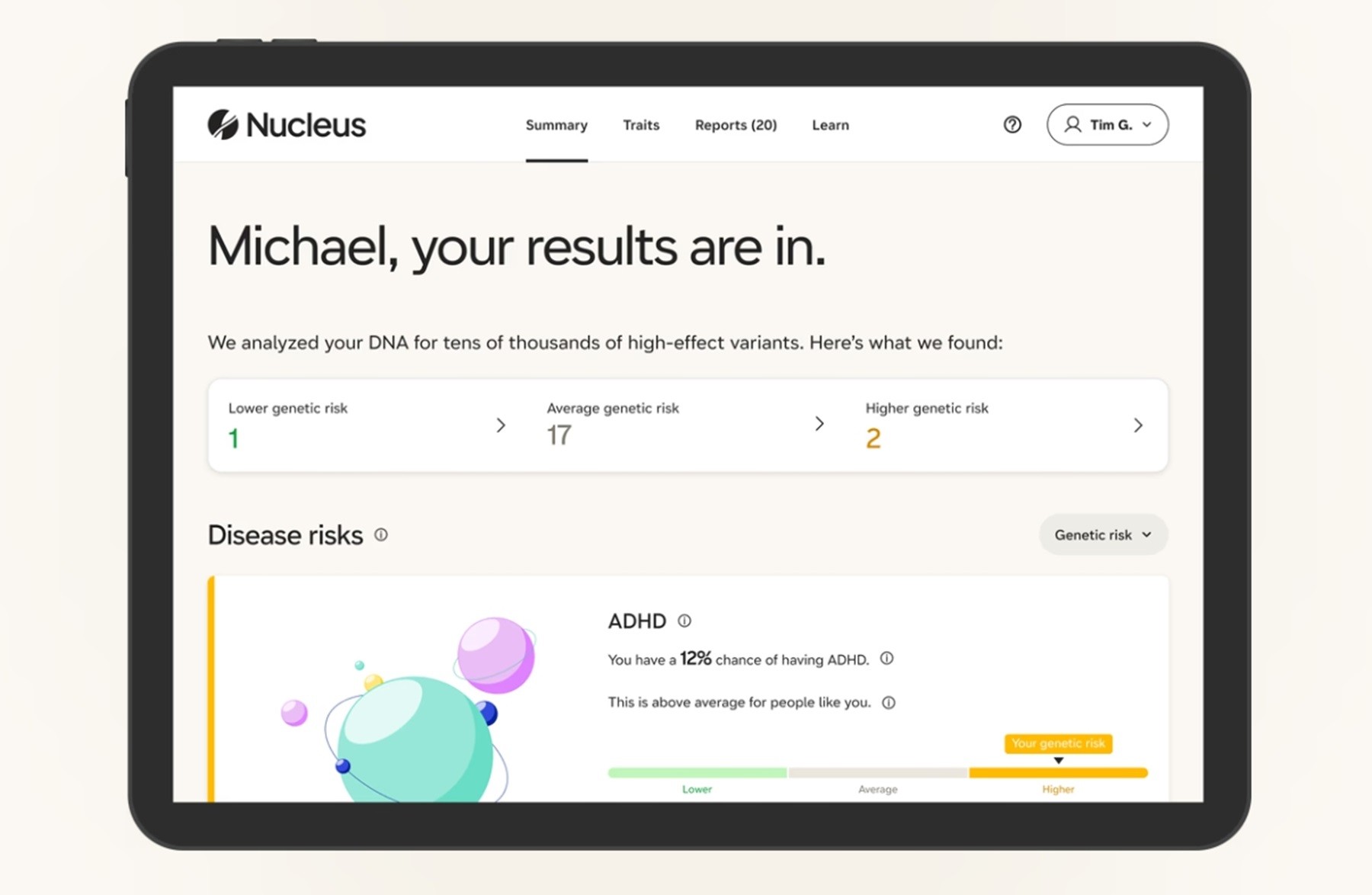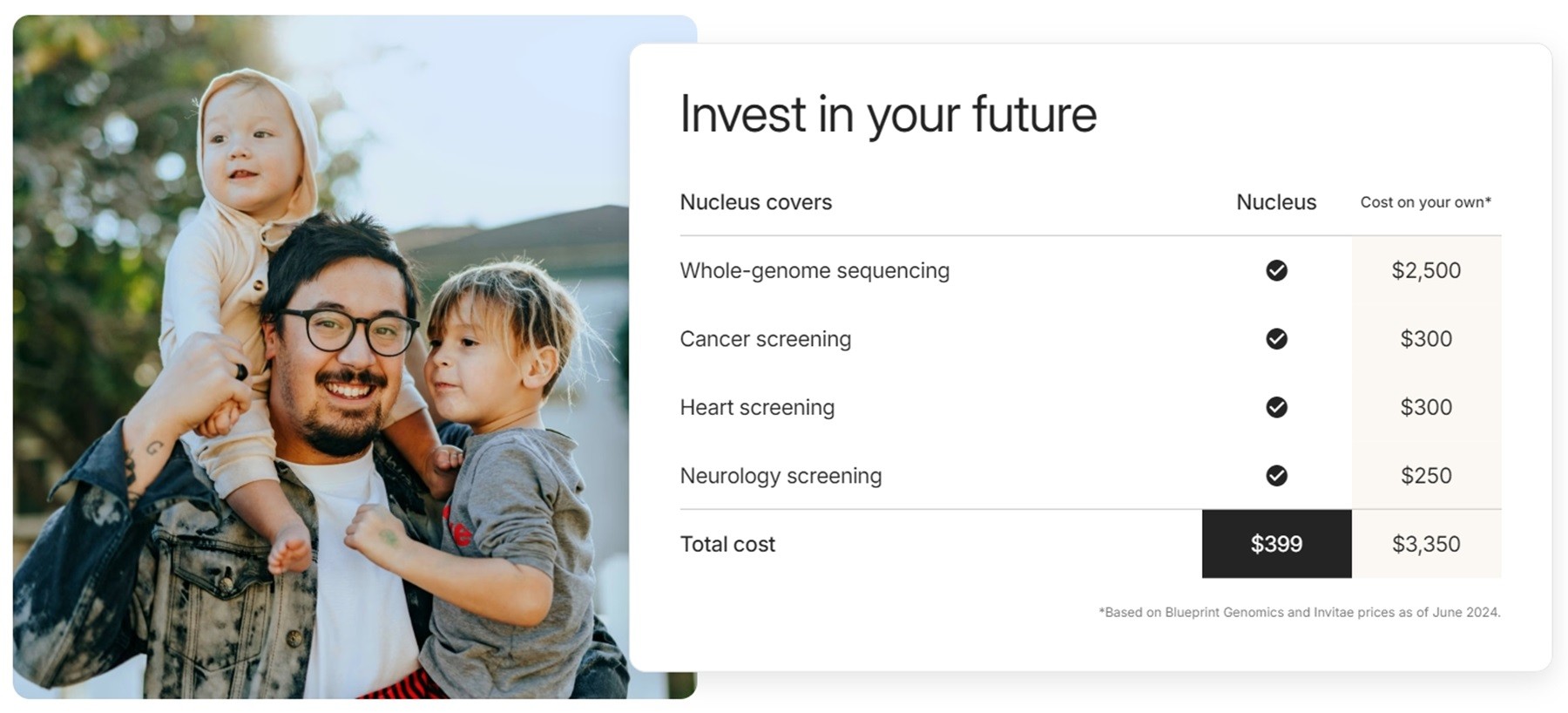Peter Attia is a frequently quoted figure in the biohacking community. Besides being a physician and researcher, Attia is known for his ability to communicate complex scientific concepts to a broad audience.
While you can learn about his philosophy in numerous places, his book Outlive provides an effective rundown. In it, Attia discusses the science of longevity and offers valuable advice to help you take control of your health and future.
If you don’t have time to read the whole piece, you can get familiar with it in this Outlive book summary. We’ll introduce you to its main concepts and actionable takeaways to help you decide whether to give it a full read.
Outlive: Synopsis and review
In Outlive: The Science and Art of Longevity, Peter Attia presents his accumulated knowledge on longevity, or the concept of expanding the lifespan. That said, he introduces a more fitting term for this — healthspan — which emphasizes living a longer life while maintaining vitality and avoiding the common challenges of aging.
Outlive is a balanced combination of scientific concepts, practical advice, and personal storytelling. Because of that, the book appeals to both experts and ordinary people. While there’s no shortage of confusing and contradictory information surrounding longevity, Outlive does an excellent job of demystifying it and making it applicable in everyday life.
The book, which counts nearly 500 pages, is divided into three main parts:
Medicine 3.0 — Attia’s revolutionary approach to healthcare
A key concept in Outlive is Attia’s vision for Medicine 3.0, a new approach to healthcare that shifts the focus from reactive treatment to proactive prevention.
According to Attia, today’s medicine (Medicine 2.0) revolves around treating ailments after they’ve developed — often too late to be fully effective. For example, prevention is much more effective for conditions like diabetes. The same approach applies to longevity: Attia stresses the importance of taking proactive steps early in life — ideally starting in your twenties — to improve your chances of living a longer, healthier life.
Attia also criticizes Medicine 2.0 for its tendency to rely on standardized protocols. In reality, every person is different — factors like genetics, lifestyle, and environment all play a role in health, meaning a universal approach to healthcare often falls short. In contrast, he argues that Medicine 3.0 empowers individuals to take health matters into their own hands, explore different methods, track progress, and figure out what works best for them.

Source: @PetterAttiaMD on X
Outlive: Takeaways for the day-to-day
While most readers will likely agree the book offers valuable insights, it’s important to note that it’s not the be-all and end-all. After all, it represents the views of one, albeit knowledgeable, individual and mainly focuses on prevention. Some readers — particularly those already dealing with specific health issues — may find it less applicable than those who are younger or in better health.
Like with any piece of health advice you come across through research, it’s important to be mindful. Consider your unique needs before integrating these recommendations into your routine.
Without further ado, let’s break down the most important longevity-promoting recommendations from Attia’s Outlive:
Beware the “four horsemen of aging”
Create a personalized health framework
Eat less using one of the three approaches
Exercise like a Centenarian Decathlete
Sleep to nurture your brain
Don’t forget about emotional health
1. Beware the “four horsemen” of aging
Chronic conditions are among the leading causes of death, and according to Attia, their prevalence is on the rise. He highlights four particularly devastating ones, which he calls the "four horsemen" of aging:
Type 2 diabetes
Atherosclerotic cardiovascular disease
Cancer
Alzheimer’s disease
Attia also points out that many people may not yet have been diagnosed but are still on a trajectory toward these conditions. With easier access to (unhealthy) food and less need for movement, our health standards have shifted for the worse.
What’s even more concerning about these conditions is that there’s not enough clinical research on their prevention. They are highly complex, and it remains unclear exactly how and which lifestyle factors affect their development. To make the most of the situation, Attia recommends focusing on your own “uncertainty” and addressing it through personal exploration.
2. Create a personalized health framework
Throughout Outlive, Attia emphasizes the importance of tailoring your health routine to fit your specific needs and goals. While medicine provides general guidelines, it’s ultimately up to you to figure out what works best for your body. Here’s how you can start:
Learn about your risk factors: For example, you should get familiar with your family history to understand which diseases and conditions your genetics predispose you to.
Explore and experiment: Try out different nutrition patterns and exercise routines, be mindful of your body’s reaction, and then stick with what feels the best.
Track progress routinely: Attia recommends regularly measuring your metabolic and other biomarkers, such as blood pressure, VO2 max, and apoB. That way, you can spot early signs of a condition or aging and adjust your strategy accordingly.
Tip 💡
Besides knowing your family history, getting a genetic test can help you identify potential health risks. Still, not all tests will give you the full story. For a complete picture of your genetic health profile, opt for a whole-genome test like Nucleus Premium.
While consumer-grade tests like 23andMe decode less than 0.1% of your DNA, Nucleus analyzes nearly 100%, so it can estimate your predispositions with 99.9% accuracy. With only one swab test, you can get screened for over [NUM_CONDITIONS_SCREENED] diseases and conditions, including the “four horsemen” and even traits like longevity.
With Nucleus Premium, you get detailed reports that explain the test findings in a clear and understandable way. They’ll also include actionable advice you can implement in your health and anti-aging routine immediately. Order your test kit today!
3. Eat less using one of the three methods
Obesity is a significant problem in America, but Attia argues that metabolic dysfunction — not just excess weight — is the real culprit behind the “four horsemen” and many other chronic conditions. In fact, he points out that even 22% of non-obese individuals experience metabolic syndrome, a condition characterized by high cholesterol, blood pressure, and glucose.
Since nutrition directly impacts these processes and metabolism in general, it requires careful consideration. The main piece of advice Attia gives is to abstain from caloric overload. Still, he advises against following diets and trends and instead recommends creating your custom protocol. He proposes three ways you can reduce your intake:
Caloric restriction: Reducing the amount of calories you consume
Dietary restriction: Reducing or cutting out specific foods
Time restriction: Reducing intake during specific periods of the day
Attia suggests experimenting with each method for about a week, paying attention to how your body reacts, and fine-tuning your eating regimen accordingly.
Bonus read — Discover Attia’s general nutrition recommendations and his opinions on fasting and the ketogenic diet.
4. Train for your Centenarian Decathlon
According to Attia, “exercise is medicine,” and its physical effects directly contribute to overall health and disease prevention. In fact, he claims that regular exercise can have as much, if not more, of an impact on health as medications. Any amount of movement makes a difference — even 15 minutes of activity a day can significantly improve longevity.
Attia recommends combining cardio, strength, and stability exercises for the most well-rounded effect. Here’s how he describes an ideal training regimen:
Still, as with nutrition, Attia recommends creating your own longevity-promoting routine, i.e., your Centenarian Decathlon. List 10 activities you’d like to still be able to do once you’re 100 years old, be it 10 minutes of walking or 10 Nordics.

Full post: Instagram
5. Sleep well to nurture your brain
Poor sleep can affect key biomarkers in your blood and lead to a slew of health problems if it persists. If you don’t get enough quality rest, even the best nutrition and exercise routine won’t be able to offset the negative effects. That’s why it’s important to prioritize high-quality, consistent sleep.
Attia emphasizes the importance of tracking your sleep to assess its quality, recognize your sleeping habits, and gauge how lifestyle factors affect your rest. With this knowledge, you can take targeted action to improve your sleep and fine-tune your routine over time. Attia has offered a few sleeping best practices you can try:
Ensure a dark sleeping environment
Make sure the temperature is 60–68 °F
Don’t drink alcohol after 6 pm
Have a consistent wind-down routine
Avoid screen time a few hours before bed
6. Don’t forget about emotional health
In the final chapter of Outlive, Attia focuses on the importance of emotional health — our ability to regulate emotions and maintain healthy relationships with ourselves and others.
To underscore how common emotional health issues are and the fallout that can result from them, Attia opens up about his own struggles. He admits that, despite his professional success, he has dealt with anger issues, depression, and destructive behaviors. Still, after getting the help he needed, he managed to resolve many of his conflicts and learned to process his emotions properly.
Although taxing, these experiences taught him valuable lessons, including that:
Change is possible
It’s okay to be vulnerable and ask for help
Caring for emotional health is equally as important as physical health
Today, Attia commits to regular emotional work and lives a significantly more fulfilling life.

Full post: Instagram
Bonus read — If you enjoyed this summary, check out our overview of Bryan Johnson’s books.
Final thoughts on the Outlive book summary
Whether you’re a fan of Attia’s work or not, Outlive is a must-have in any biohacker’s library; it effectively summarizes the theoretical and practical knowledge on longevity. What sets it apart is its balanced approach — rather than claiming to have all the answers, the book encourages self-exploration, experimentation, and mindful observation to forge your own path to long-term health.
Longevity is a complex and highly individualized process, and figuring out the right anti-aging strategy can feel overwhelming. A great starting point is taking a genetic test to understand your predispositions. That way, you’ll know which areas of your health demand the most attention and can apply adequate measures to ensure vitality as long as possible.
Among numerous genetic tests available today, Nucleus Premium stands out due to its unparalleled comprehensiveness. The platform analyzes nearly your whole genome, takes into account non-genetic factors, screens for hundreds of diseases and conditions, and calculates your longevity score.
Nucleus: All-in-one DNA insights to shape your future
Nucleus is a clinical-grade platform that offers an in-depth look into your genetics and how they may impact your healthspan and lifespan. You only need to provide a cheek swab, and Nucleus will analyze it using the latest whole-genome sequencing technology, which allows it to estimate your predispositions with 99.9% accuracy.
Within a few weeks, you’ll receive a detailed report, which includes:
Risk scores for over [NUM_CONDITIONS_SCREENED] diseases and conditions, including the “four horsemen,” food and energy-related issues, and even mental health conditions
Absolute risk, which accounts for your lifestyle factors, such as cholesterol levels
Longevity score, your chance of living past 80 years
Analyses of traits like intelligence, BMI, and muscle mass
Carrier status for numerous diseases and conditions your children may inherit
Nucleus will present the findings using plain, jargon-free language and provide actionable advice. If you have questions about your reports or need expert input, Nucleus can connect you with a genetic counselor via SteadyMD.

Longevity knowledge made accessible
While Attia’s medical services are typically reserved for only the most affluent, Nucleus is affordable and charges only [PRICE.KIT_SOLO.ONE]* for the whole-genome test. The price includes the test kit, all available risk and trait analyses, and free two-way shipping.
*Nucleus is FSA/HSA-eligible, so you may be able to use your health savings plan to cover the costs.
Your risk scores may change over time as you modify your habits and scientists discover more about genetics, so Nucleus will send you regular updates to keep you up to date with the latest discoveries.
Order Nucleus Premium today: Your future self will thank you
Here’s how you can get started with your Nucleus DNA analysis:
Fill out your personal information
Order the Nucleus Premium test kit
Your kit will arrive at your doorstep within a few days, after which you need to swab your cheeks — this process is quick, simple, and painless. Once you mail the sample to the lab, you’ll get your results online within six to eight weeks.
Note: Nucleus complies with HIPAA and works with fully regulated U.S. labs, so it adheres to the highest standards for data security and testing quality.

You may also like…
Check out our other articles on Peter Attia’s philosophy:
Featured image source: Ben White












